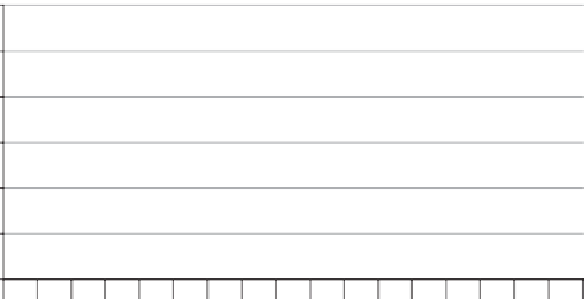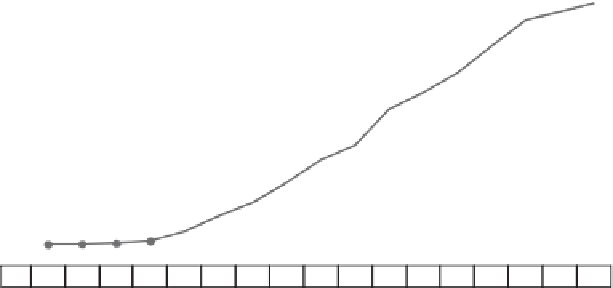Environmental Engineering Reference
In-Depth Information
25%, the contribution that wind power makes to national electricity pro-
duction amounts to about 5724 GWh, a mere 0.7% of domestic electricity
output.
As Figure 9.7 depicts, Japan was a comparatively late adopter of com-
mercial wind power. In 1992, the nation possessed only 3 MW of installed
wind power capacity. By comparison, the United States possessed 1680 MW
of installed wind power capacity, Denmark hosted 436 MW, and Germany
had 183 MW in the same year.
32
But it is not just a late start that has
handicapped the wind power development program. As Figure 9.7 further
illustrates, the pace of wind power development has also been laccid. As
a comparative, in 1992, China only possessed 6.14 MW of installed wind
power capacity. Although the two nations initiated their respective wind
power programs around the same time, China's installed wind power capac-
ity exceeds Japan's by over 28 times.
Between 1981 and 1991, the Japanese government allocated an annual
average of approximately US$4 million to wind power research (see Figure
9.4). To put this into perspective, the funds allocated for geothermal R&D
in 1981 alone were twice as much as wind power researchers received during
the entire decade in question.
In 1992, the government initiated sponsorship of a three-year program
for testing prototype wind turbines.
33
Over a three-year period (1992-
1994), wind power R&D funding increased to just under US$10 million per
year. his inanced the development of demonstration turbines, launching
Japan's commercial wind power era. However, it is apparent in hindsight
that the government was not sold on the results of the research, because
3000
2500
2000
1500
1000
500
0
1992
1994
1996
1998
2000 2001
2002 2003 2004 2005
2006 2007 2008 2009 2010
2011
2012
MW
3
6
14
38
144
313
464
681
925
1085 490
1674
1882
2186
2472
2557
2649
Figure 9.7
. Wind Power Development in Japan
Source
: Japan Wind Power Association website, 2013.















